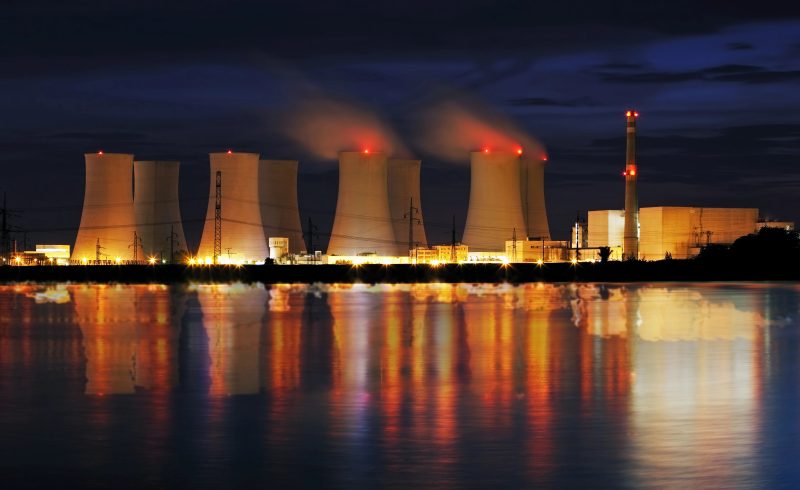The use of nuclear energy for electricity generation raises important questions about sustainability, safety, and environmental impact.
By weighing these factors carefully, we can gain a clearer understanding of nuclear power’s role in meeting global energy needs.
This balanced assessment will help inform discussions on energy policy and future power generation choices.
Key Advantages and Drawbacks of Nuclear Power
Benefits and Challenges of Atomic Energy
Pros:
- Carbon-free electricity generation
- High energy output from small land area
- Reliable baseload power for the grid
Cons:
- Non-renewable resource
- High initial construction costs
- Environmental and health risks
Nuclear plants produce no carbon emissions during operation, making them an attractive option for reducing greenhouse gases.
They also generate large amounts of power while occupying relatively little space.
On the other hand, nuclear fuel is finite and will eventually run out. Building new plants requires massive upfront investments.
The handling of radioactive waste and potential for accidents pose ongoing challenges.
Weighing these factors is crucial when evaluating nuclear energy’s role in the power mix.
Benefits of Nuclear Power Generation
Emissions-Free Power Production
Nuclear power plants generate electricity without releasing greenhouse gases during operation. This makes them a key tool in combating climate change.
Unlike fossil fuel plants, nuclear facilities do not emit carbon dioxide or other air pollutants when producing power. This clean energy helps improve air quality and reduce the environmental impact of electricity generation.
Compact Facility Size
Nuclear power plants require relatively little land compared to other clean energy sources. A typical nuclear plant producing 1,000 megawatts of electricity occupies about one square mile.
Wind and solar farms need much more space to generate the same amount of power. A nuclear plant’s small footprint allows for more efficient land use.
Substantial Energy Output
Nuclear reactors can generate large amounts of electricity consistently. A single plant can power millions of homes and businesses.
This high output makes nuclear well-suited to meet baseload power needs – the minimum level of demand on an electrical grid.
Nuclear plants run at full capacity over 90% of the time, providing a stable energy supply. Their ability to produce abundant power makes them a good replacement for large fossil fuel plants.
Dependable Power Source
Nuclear energy offers reliability and consistency. Plants run continuously, only shutting down briefly for refueling and maintenance.
This allows them to produce maximum power output more than 90% of the time.
Wind and solar depend on weather conditions, while nuclear provides steady electricity regardless of external factors.
The stable nature of nuclear power helps maintain a reliable electrical grid.
Drawbacks of Nuclear Power Generation
Non-Renewable Fuel Source
Nuclear power relies on uranium, a finite resource. As uranium reserves dwindle, extraction costs will rise.
Mining and processing uranium also have environmental impacts. These factors limit the long-term viability of nuclear energy as a sustainable power source.
Substantial Initial Investment
Building nuclear plants requires significant capital. The complex safety systems and specialized equipment drive up construction costs.
This makes it challenging for many regions to pursue nuclear power, despite its potential benefits.
Radioactive Waste Management
Nuclear power produces hazardous waste that remains radioactive for thousands of years. Storing this waste safely is a major challenge.
It requires advanced containment systems and careful monitoring. The long-term risks of nuclear waste storage remain a concern for many communities.
Potential for Severe Accidents
While rare, nuclear accidents can have devastating consequences. A malfunction could release harmful radiation into the environment.
This poses risks to human health and ecosystems. Past incidents have led to long-term evacuations and environmental damage.
Key Risks of Nuclear Accidents:
- Radiation exposure
- Contamination of air, water, and soil
- Forced evacuations
- Long-term health effects
Nuclear plants have multiple safety measures to prevent accidents. These include:
- Containment structures
- Redundant cooling systems
- Automatic shutdown mechanisms
- Strict operational protocols
Despite these precautions, the potential for catastrophic events remains a significant concern.
This risk factor influences public perception and policy decisions regarding nuclear energy.
The table below compares the safety record of nuclear power to other energy sources:
| Energy Source | Fatalities per TWh |
|---|---|
| Coal | 24.6 |
| Oil | 18.4 |
| Natural Gas | 2.8 |
| Nuclear | 0.07 |
| Solar | 0.02 |
| Wind | 0.04 |
While nuclear power has a low fatality rate, the potential for large-scale disasters sets it apart from other energy sources.
This unique risk profile continues to shape debates about the role of nuclear energy in future power generation strategies.






